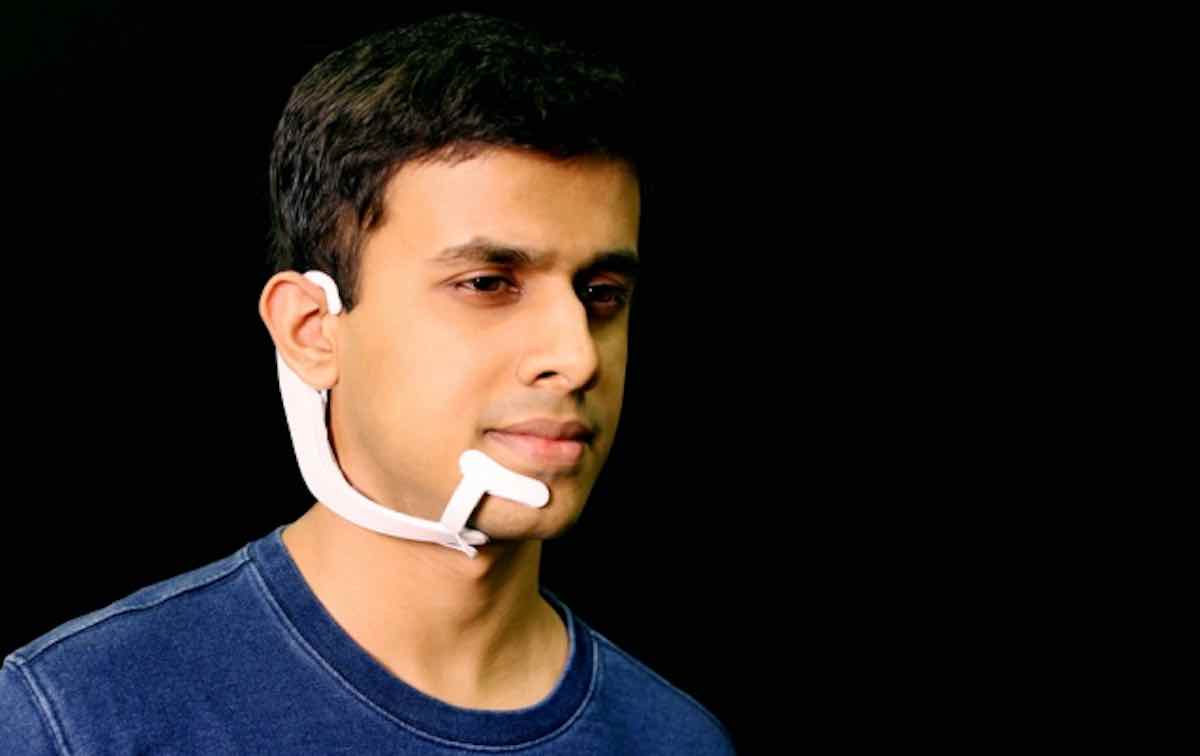
Computer system transcribes words users “speak silently”
Electrodes on the face and jaw pick up otherwise undetectable neuromuscular signals triggered by internal verbalizations.
Written by Larry Hardesty
MIT News
Imagine if you were in a situation where you weren’t able to speak out loud – but you could still have a conversation with the people around you? MIT researchers have developed a computer interface that can transcribe words that the user verbalizes internally but does not actually speak aloud.
The system consists of a wearable device and an associated computing system. Electrodes in the device pick up neuromuscular signals in the jaw and face that are triggered by internal verbalizations — saying words “in your head” — but are undetectable to the human eye. The signals are fed to a machine-learning system that has been trained to correlate particular signals with particular words.
The device also includes a pair of bone-conduction headphones, which transmit vibrations through the bones of the face to the inner ear. Because they don’t obstruct the ear canal, the headphones enable the system to convey information to the user without interrupting conversation or otherwise interfering with the user’s auditory experience.
The device is thus part of a complete silent-computing system that lets the user undetectably pose and receive answers to difficult computational problems. In one of the researchers’ experiments, for instance, subjects used the system to silently report opponents’ moves in a chess game and just as silently receive computer-recommended responses.
RELATED: These Ordinary Hats Are Actually Bicycle Helmets That Could Save Thousands of Lives
“The motivation for this was to build an IA device — an intelligence-augmentation device,” says Arnav Kapur, a graduate student at the MIT Media Lab, who led the development of the new system. “Our idea was: Could we have a computing platform that’s more internal, that melds human and machine in some ways and that feels like an internal extension of our own cognition?”
“We basically can’t live without our cellphones, our digital devices,” says Pattie Maes, a professor of media arts and sciences and Kapur’s thesis advisor. “But at the moment, the use of those devices is very disruptive. If I want to look something up that’s relevant to a conversation I’m having, I have to find my phone and type in the passcode and open an app and type in some search keyword, and the whole thing requires that I completely shift attention from my environment and the people that I’m with to the phone itself. So, my students and I have for a very long time been experimenting with new form factors and new types of experience that enable people to still benefit from all the wonderful knowledge and services that these…










